
Hit2k.com – Unique Facts About the Composition of Button On Keyboard ,The keyboard is one of the most frequently used, with the keyboard we can type anything and even can make the keyboard of a personal collection.
Keyboard that we use today is the adaptation of a typewriter invented by Christopher Latham Sholes in 1874. Before becoming a full QWERTY keyboard arrangement, he composed the buttons based on alphabetical order. However, the composition according jammed when the alphabet is often the most frequently used buttons are on the same side pressed quickly.
To overcome these problems, born QWERTY keyboard layout that separates combinations of letters are often used on the side berserk attack on the keyboard. QWERTY layout is able to slow down typing so as to make the keyboard less often jammed.
It turns out that not only are there the QWERTY layout on the keyboard, there are some other facts that are quite unique. Here is a unique fact about the arrangement of the keyboard:
Keyboard QWERTY
It is currently the most widely used types without knowing the limits of geography and language. Nevertheless, this type varies in each country that has more than 26 Latin alphabet, for example in the Netherlands, Denmark, Estonia, Finland, Iceland, Norway, Turkey, and Vietnam.
- The composition of the alphabet on the top row: QWERTYUIOP
- Middle row: A S D F G H J K L
- Bottom row: Z X C V B N M
AZERTY keyboard
Usage region: France, Belgium, and Lithuania
- The composition of the alphabet on the top row: AZERTYUIOP
- Middle row: Q S D F G H J K L M
- Bottom row: W X C V B N
QWERTZ keyboard
Usage region: Germany, Austria, Czech Republic, Poland, Hungary, Slovakia, Switzerland, Liechtenstein, Luxembourg, Bosnia, Croatia, and Slovenia
- The composition of the alphabet on the top row: QWERTZUIOP Ü
- Middle row: A S D F G H J K L Ö Ä
- Bottom row: Y X C V B N M
QZERTY Keyboard
- Usage region: Italy
- The composition of the alphabet on the numerical line: Ç È À É
- Top row: Q Z E R T Y U I O P Ì
- Middle row: A S D F G H J K L M Ù
- Bottom row: W X C V B N Ò
Dvorak keyboard
The findings of this August Dvorak in 1936 created taking into account the fact that most people are right-handed. Different from QWERTY to encourage more use of the left hand, right hand Dvorak allows the use of more than 50% on average typing thereby increasing the speed of typing.
- The composition of the alphabet on the top row: P Y F G C R L
- Middle row: A O E U I D H T N S
- Bottom row: Q J K X B M W V Z
keyboard Colemak
This type is made based on a QWERTY keypad with a change in position 17 of the alphabet. As Dvorak, Colemak designed to reduce the displacement distance finger from one key to another key. One of the main characteristics Colemak is the loss of the [Caps Lock] is replaced with the [Backspace]. So, there are two buttons [Backspace].
- The composition of the alphabet on the top row: QWFPGJLUY
- Middle row: A R S T D H N E I O
- Bottom row: Z X C V B K M
keyboard MALTRON
Different from other keyboard layout, buttons MALTRON alphabet is divided into two blocks separated by a numeric key block in the middle.
The composition of the alphabet on the top row: QPYCB (left) VMUZL (right)
- Middle row: A N I S F (left) D T H O R (right)
- Bottom row: J G (left) W K X (right)
- Outside the lines: E (bottom left)
keyboard JCUKEN
This type is used in the Soviet Union or Russia today because of its compatibility with the Russian keyboard layout ЙЦУКЕН.
- The composition of the alphabet on the top row: J (Й) C (Ц) U (У) K (К) E (Е) N (Н) GZH
- Middle row: F Y W A P R O L D V
- Bottom row: Q S M I T X B


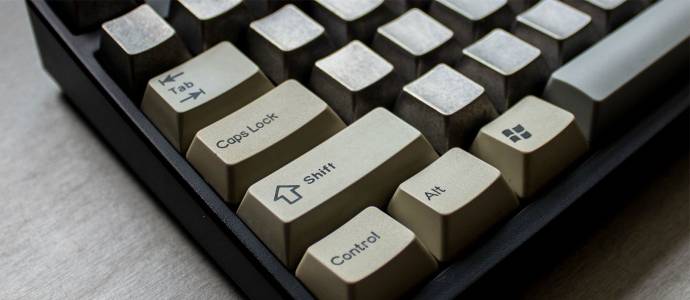
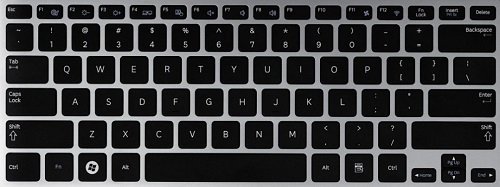
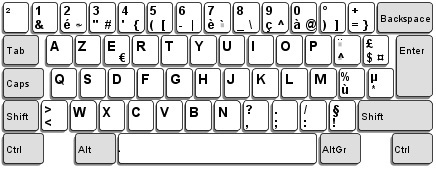




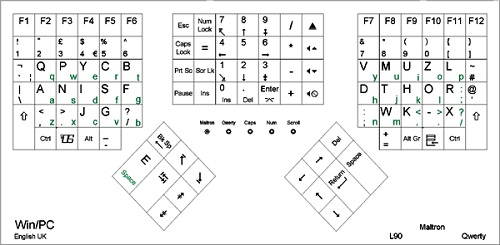





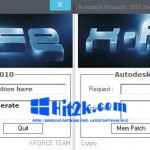

Leave a Reply